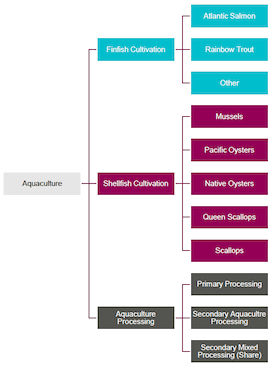Aquaculture sector - wider economic impacts: estimates
This study provides the estimates of the direct, indirect and wider economic impacts of the Scottish aquaculture sector for 2018, including associated tax receipt estimates.
2. Introduction
This document is a draft final report for a study commissioned by Marine Scotland on estimating the wider economic impacts of the aquaculture sector in Scotland.
2.1 Study Background
In previous years there have been multiple studies which have considered the economic impact of the aquaculture sector to the Scottish economy. These studies have utilised Scottish Input Output multipliers, the assumptions of these multipliers predate the recent developments in the sector. In 2019, Marine Scotland commissioned BiGGAR Economics to undertake a study into the direct and wider economic impacts of the sector to Scotland to update these studies.
2.2 Study Objectives
The aims of the study were to support the ambitions of Scotland’s National Marine Plan by enabling the accurate monitoring and evaluation of the impacts of the aquaculture sector.
The specific objectives of the study were to produce:
- estimates of the direct, indirect and induced impacts of the Scottish Aquaculture sector for 2018, including associated tax receipts; and
- an economic impact tool to enable Marine Scotland to robustly estimate impacts in future years.
2.2.1 Sector Scope
Previous studies of the economic impact of aquaculture have defined the sector in different ways. The scope of the aquaculture for this study was defined as including the following activities:
- finfish cultivation;
- shellfish cultivation; and
- cultivated finfish and shellfish processing.
The aquaculture sector was defined in this way in the rest of the report, unless otherwise stated.

2.3 Report Structure
The remainder of the report is structured as follows:
- Chapter 3 sets out the main results from the survey;
- Chapter 4 estimates the direct economic activity from Scottish aquaculture;
- Chapter 5 estimates supply chain impacts;
- Chapter 6 considers the impact generated by staff spending (induced impacts);
- Chapter 7 estimates the sector’s fiscal contribution;
- Chapter 8 summarises the results from the quantitative exercise;
- Chapter 9 provides qualitative evidence emerged from consultations;
- Chapter 10 concludes; and
- Chapter 11 provides appendix material on the methodological approach followed.
Contact
There is a problem
Thanks for your feedback